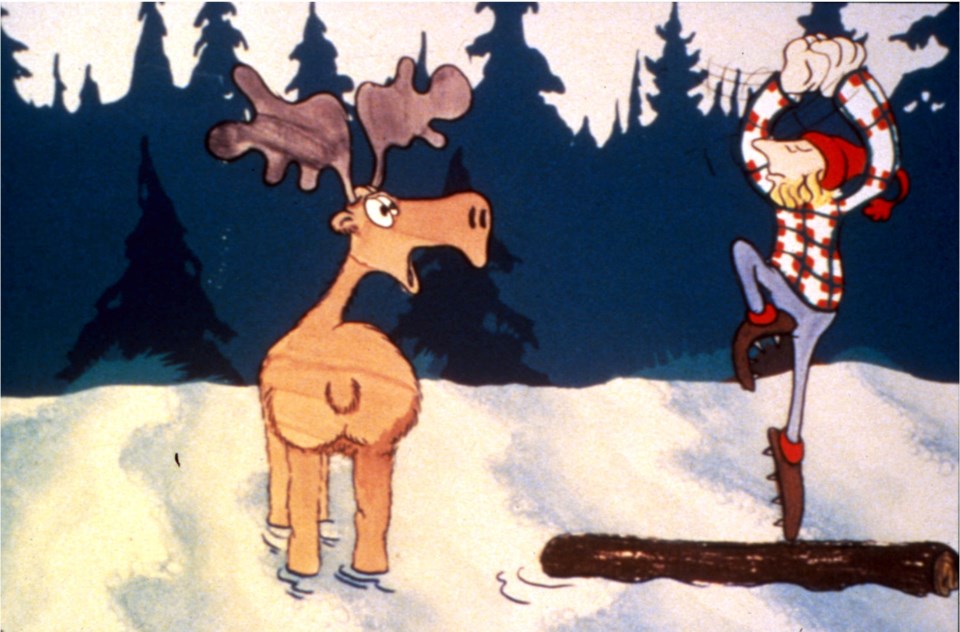If you grew up in a decade where your teacher would occasionally wheel a television cart into the classroom and pop in a VHS tape from the National Film Board for a few minutes of peace and Can-con, you’re probably familiar with that animated log driver “birling down and down the white water…”
That classic film – The Log Driver’s Waltz – is one of the National Film Board of Canada’s most iconic works. It’s right up there with The Cat Came Back and The Sweater.
But that particular trio of works is only the tip of a giant iceberg of 13,000 films that extends back to 1939, when the NFB was founded to develop and nurture what NFB Commissioner Claude Joli-Coeur calls “Canada’s visual fabric” in a recent interview.
Since those pioneering days, the NFB has been churning out all manner of cinema – animated, live-action, documentaries, and shorts – as part of its mandate to “foster an understanding of what Canada is about, and make Canada known to the balance of the world,” says Joli-Coeur.
“The mandate has been in the NFB Act since 1939, and it’s barely changed,” he says. “It’s how that mandate has been fulfilled that has changed over the years, with the evolution of the different kinds of creation, the emergence of the private sector, and the cuts that happened in 1996.” Those cuts slashed the NFB’s budget by 30 per cent, and led to the film board’s decision to focus primarily on animation and documentaries, says Joli-Coeur.
Currently, the NFB produces an average of 50 films per year. Recent highlights include 2014’s Everything Will Be, in which filmmaker Julia Kwan explores the sweeping changes facing Vancouver’s Chinatown, and Ninth Floor, Vancouverite Mina Shum’s haunting examination of the 1969 Sir George Williams riot. Both films screened to packed houses at consecutive editions of the Vancouver International Film Festival.
And now, the NFB invites you – yes, you! – to screen their gargantuan body of work whenever and wherever you want: at home, on the bus, during lunch breaks, when you should be working...
It’s the binge-watching age, after all, so the NFB is diligently digitizing their archives for widespread consumption. Of the aforementioned 13,000 films, more than 3,200 are already digitized and available for streaming via the NFB’s web site, various YouTube channels, partner sites like Canada Screens, and the NFB Films app – all free of charge.
“Even though we have recorded more than 80 million screenings of our films since we launched the platform in 2009, our biggest challenge is to get our stuff known and that every Canadian discovers the content and accesses it,” says Joli-Coeur.
For Canadians who love the stories behind the on-screen stories, there’s the Making Movie History app, which the NFB rolled out in May. The app facilitates access to the short films in the Making Movie History: A Portrait in 61 Parts project, in which pioneering filmmakers and producers discuss the challenges they faced building the NFB into the prolific institution it is today. Legendary BC filmmakers Anne Wheeler, Mort Ransen, and Bonnie Sherr Klein are featured in the project; it can be viewed online or via the iTunes store.
The app isn’t the only way that the NFB is demonstrating that it understands that times and tides are changing. On International Women’s Day 2016, the NFB announced that, going forward, 50 per cent of all NFB films would now be directed by women.
Why the gender parity? “To paraphrase our prime minister, because it’s 2016, and it’s about time that it happens,” says Joli-Coeur. Last month, Joli-Coeur accepted the Please Adjust Your Set Award at Women in Film and Television Vancouver’s 2016 Spotlight Gala.
That particular award recognizes individuals who promote gender equality in the film and TV industry.
“I know women bring a different point of view, and it’s essential,” says Joli-Coeur.
As for the NFB’s digital archives: You can search NFB.ca by director, genre, title, or keywords – or do what Reel People does, and just hit play on some random film and careen down the rabbit-hole and, before you know it, three hours have passed, and you’re feeling more Canadian than ever before.
Need an entry point into the NFB’s online archives?
Try Reel People’s eclectic list of Vancouver-centric films that are all available to screen free-of-charge on NFB.ca:
Rock the Box (2015)
Documentary short by writer-director Katherine Monk about DJ Rhiannon, a game-changing and controversial force in Vancouver’s EDM world.
Through a Blue Lens (1999)
Meet the Odd Squad, a group of police officers who’ve developed a unique relationship with addicts in Vancouver's Downtown Eastside.
Standing Tall (2015)
Three French-speaking women from Senegal, Mexico and Belgium take a look at their experience immigrating to Vancouver, where they raise their children alone.
Whistling Smith (1975)
This mid-’70s gem follows Sergeant Bernie “Whistling” Smith as he walks the beat on Vancouver's Eastside.
Citizen Sam (2006)
This unflinching feature documentary follows then-councillor Sam Sullivan as he campaigns to be mayor.
Sleeping Tigers: The Asahi Baseball Story (2003)
The remarkable film about the Vancouver Asahi baseball team, whose members survived life in Japanese Canadian internment camps by playing baseball.
The Zoo in Stanley Park (1953)
An uncomfortable but illuminative window into a different time and place in our civic history, when polar bears and other poor creatures lived in cramped conditions in Stanley Park.


